1. The First Tree
The first tree debuted at Rockefeller Center on Christmas Eve, 1931. The tree, erected by construction workers eager to receive a day’s pay in the depths of the Depression, stood only 20 ft. tall — a quarter of the size of this year’s holiday specimen.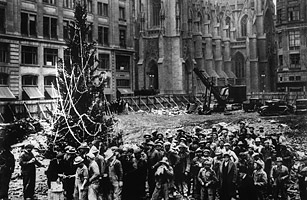
Lets take a look at some of the 79-year-old tradition’s most historic moments
2. The $1.5 Million Star
In 1931, tin cans and scrap paper were used to adorn the tree — appropriate decorations for Depression-era America. Then came garlands and glass. Colored lights and ornaments in the shape of dogs and sailboats made their appearance in 1934. A 4-ft. plastic star, a white spray-painted tree and 10-ft.-long aluminum icicles were staples of the 1950s. The 1990s took it up a notch with a gold-leaf star. But that was nothing compared to the 550-lb. Swarovski star unveiled in 2009. Created specifically for the tree and standing 10 ft. tall, the estimated $1.5 million star is made of 25,000 crystals and 1 million facets.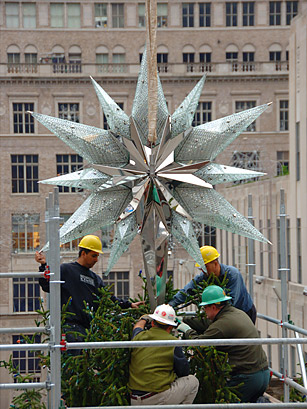
3. The Tree Goes Black
One of the most spectacular features of the tree every year is its nighttime glow. But in 1944, the Christmas trees (yes, three trees, in fact) remained unlit. The backstory is that two years earlier, Rockefeller Center unveiled three small trees dedicated to the U.S. effort in World War II — each one either red, white or blue. The patriotic trees were replanted over the next couple of years, but in 1944, in line with wartime blackout regulations, the trees stayed dark. When the war ended in 1945, the organizers made up for lost time and used six ultraviolet-light projectors to make all 700 fluorescent globes on that year’s tree appear to glow in the dark.
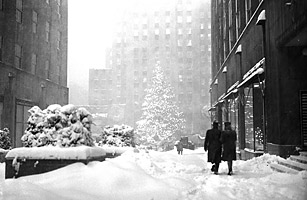
4. A Television Debut
In 1951, the tree made its first appearance on television when the lighting ceremony was shown on The Kate Smith Show. Two years later, it became a special each year on The Howdy Doody Show until 1955. With the tree’s appearance on television, the 1950s also saw the emergence of more and more elaborate decorations. In 1953, 6,000 icicle lights and giant floodlights illuminated the tree, and just a year later, white angel trumpeters were added.
5. The Search for the Perfect Tree
On several occasions, the tree has been donated to Rockefeller Center. In 1956, for example, a New Hampshire man gave a white spruce to New York’s governor, who handed it over to the tree’s organizers. Ten years later, the nation of Canada decided to give over one of their trees. But most of the time, it has been purposefully sought out. For a long while, David Murbach, who was the center’s garden manager before he passed away late last year, used to rent a car and take scenic drives through New England in order to find the finest specimen. More recently, though, Rockefeller Center’s crew has taken a helicopter into New England to locate the perfect tree from aloft.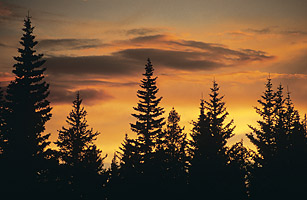
6. Tree Climbing
Most Rockefeller Center trees endure a largely uneventful Christmas season. Admired from afar, they sometimes serve as the backdrop for tourists’ photos, but that’s pretty much it. However, in 1979 the Rockefeller tree became part of a political protest when a 27-year-old man scaled it and began shouting “Free the 50!” — referring to the Americans who were then being held hostage (see photo) at the U.S. embassy in Iran. He came down when police officers pointed out that climbing a Christmas tree would not help free the hostages. Another man tried to climb the tree in 1980, but he offered no motive for his actions. Apparently he just thought it would be fun.
7. Taking the Trees into the City
Because they’re so big — and New York City so traffic-jammed — the Rockefeller Center Christmas trees travel into the city at night, when fewer cars are on the road. Each tree’s uppermost branches are decorated before it is raised into a standing position. And the tree doesn’t require watering: because it’s outside, the behemoth doesn’t dry out the way that smaller indoor Christmas trees do.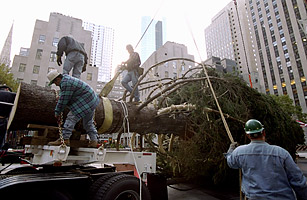
8. The Tallest Tree
These days, the Rockefeller Center Christmas tree usually stands no less than 65 ft. tall (this year it’s 74 ft. tall). The 1999 display boasted the tallest tree, a Norway spruce that stood over 100 ft. tall. Because the tree must maneuver through narrow city streets, it most likely won’t ever be much larger than that. The Norway spruce has been New York City’s tree of choice since 1982.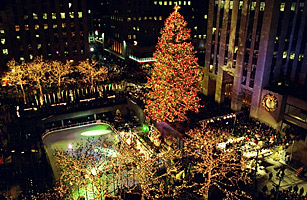
9. Going Greener
You wouldn’t think that a tree could go more green than it already is. But with environmental concerns gaining traction in the 1960s and 1970s, Rockefeller Center began recycling its tree after Christmas. In 1971, it turned the tree into 30 three-bushel bags of mulch for nature trails in upper Manhattan. In 2005, Habitat for Humanity used wood from that year’s tree to make door frames for its homes. By 2007, the tree’s organizers had switched to all energy-saving LED lights, some 30,000 of them. The new bulbs used 1,200 kilowatt hours less electricity per day — enough to power a 2,000 sq.-ft. home for an entire month.
10. The Newest One
The 2010 Rockefeller Center Christmas tree stands 74 ft. tall and weighs 12 tons. Before this holiday season, it lived in Mahopac, N.Y. — in the side yard of New York City firefighter Peter Acton, who said he was sorry to see his beloved evergreen go.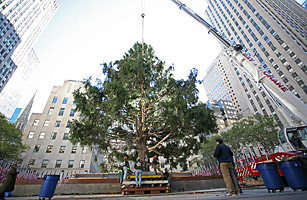

0 comments:
Post a Comment